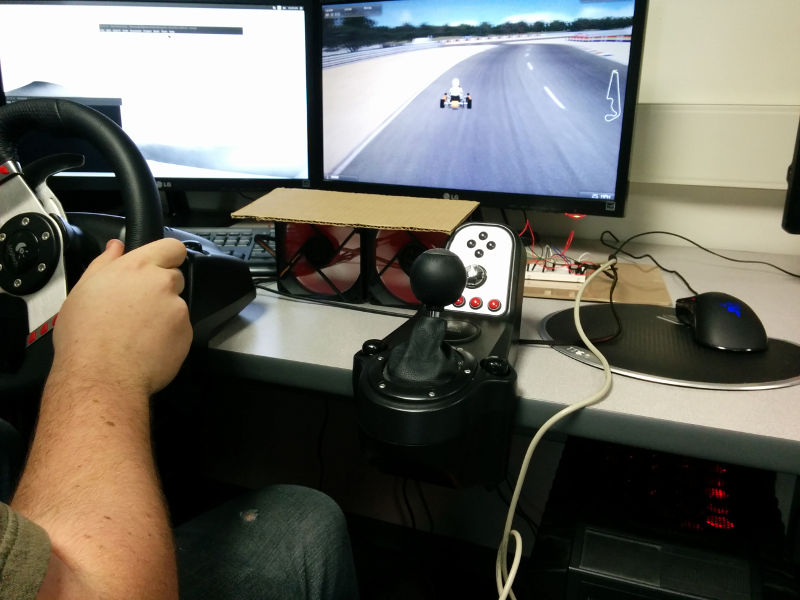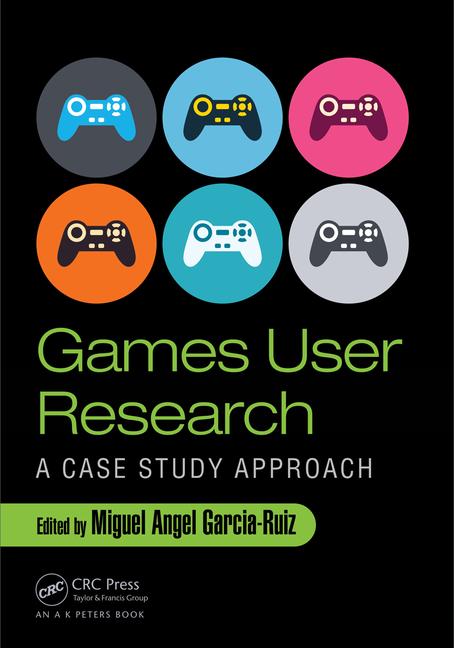Go
back to main web page
Current research projects
My students and I are trying to see whether low-cost technology can be effective for making simulated physical wind for video game playing, and how it could affect the racing game's usability and player experience. We made an initial prototype that includes two computer fans that were operated by a microcontroller board (an Arduino Uno). They were connected to the PC running the racing video game. The fans' speed changed according to the car acceleration in the game. We conducted an initial Think Aloud Protocol usability evaluation, where 16 participants played the video game. At the end of the usability test, participants filled out a System Usability Scale (SUS) questionnaire. Results indicate that all the participants felt the simulated wind usable for the game. Results of the SUS questionnaire indicate that usability was not affected by the simulated wind. We are also experimenting with more powerful fans.

3D Digitization of cultural heritage objects using video game technologies:
A number of museums, libraries, archives and cultural heritage research institutions (such as the Museum of Anthropology at the University of British Columbia and the Smithsonian Institution) are digitizing their cultural objects, not only for the sake of preserving cultural heritage, but also to make information on the object collection easily accessible to scholars and the general public. Once an object’s 3D digital model is created, it is possible to show it on a web page using desktop computers. This will allow researchers, students and interested people to inspect the 3D models from many angles interacting with the digitized object virtually. The 3D model can also be accompanied with a description of the digitized artifact and extra information such as pictures on how the object was used. However, digitizing cultural objects is not trivial, since special care must be exercised when manipulating them, most of the generated 3D model files are really large, and new and efficient techniques are needed for improving the 3D object digitization and visualization, among other challenges.
The overarching aim of this project is to create 3D models of cultural objects in an affordable and efficient way, to see if the tools and techniques to be used in this project are feasible and can be applied later in large-scale digitization projects. In addition, we will be showing 3D models of cultural objects on mobile devices such as cellphones, among other applications. I will contact Algoma University Library and other respective areas to see if I could use some publicly-available Anishinaabe culture objects to be digitized as a test bed in this project. Permissions to use those objects will be sought if needed.
Project funded by Algoma University Research Fund (AURF), originally funded for the year 2016.Watch this 3D model and others from our Sketchfab website:
https://sketchfab.com/models/44ce7f1dfdd94aeaba8ffd5951275598
Applying virtual reality (VR) to support analysis of molecular structures:
Scientific
visualization of molecular models using virtual
reality (immersive and interactive computer-generated
simulation of three-dimensional environments) has been
conducted for over two decades. Past research reported
that virtual reality (VR) supports the understanding
of some abstract key molecular properties, such as
molecular shape and docking (e.g. Moriz & Meyer,
2004). Despite positive reported findings, little is
known on how to improve the utility (the VR system
provides exactly the features that scientists need)
and usability (development of efficient, effective and
satisfactory computer systems) of virtual reality
systems that support molecular analysis, and how to
improve the scientist-molecular model interactions. In
addition, most VR systems used in molecular modelling
are highly visual and do not exploit other human
sensory channels, such as the sense of hearing. Sound
effects and musical tones (auditory display) can be
used for representing and mapping important molecular
information, and they can help scientists to
comprehend molecular structure by listening to that
auditory information, along with 3D molecular
visualization (Garcia-Ruiz & Gutierrez-Pulido,
2006). Auditory display applications in VR for
understanding molecular structure has been little
investigated.
The overarching aim of my project is to develop a highly usable and useful virtual reality system to work as a testbed to test interaction design, scientific visualization and auditory display for supporting scientists and students in analyzing molecular structure and docking.
Project funded by Algoma University Research fund (AURF) (2018-2019)https://sketchfab.com/models/0ba70b315d984ac294f24bc9f4549fc2
Miguel A. Garcia-Ruiz, BEng, MSc, PhD
Associate Professor
Algoma University
Department of Mathematics and Computer Science
Office: WW105G
1520 Queen Street East
Sault Ste. Marie, Ontario, Canada, P6A 2G4
Phone: 705-949-2301 ext. 4312
Email: miguel dot garcia at algomau.ca
Last web page update: November 8, 2018.
Copyright © Miguel A. Garcia-Ruiz design from css3templates.co.uk


